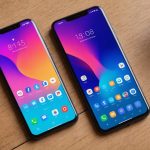Overview of iOS and Android Ecosystems
In understanding the iOS ecosystem and the Android ecosystem, it is crucial to recognize their profound influence on consumer behavior. The iOS ecosystem, championed by Apple, is lauded for its seamless integration across devices, facilitating a cohesive user experience that many find indispensable. Android, primarily managed by Google, presents a flexible, open-source alternative, empowering manufacturers and developers with vast customization options.
Examining market shares, Android holds a commanding presence globally, especially in regions with diverse consumer demographics appreciating affordable device range. Conversely, iOS thrives in markets valuing premium products, with significant influence in North America and parts of Europe. Recent growth trends highlight Android’s expansion in emerging markets, whereas iOS sustains growth through strong brand loyalty and app store revenues.
Also to discover : Unlocking advantages: why dual sim smartphones are essential for frequent travelers
The interplay between ecosystems and consumer preferences is evident. Consumers often weigh factors such as device interconnectivity, ease of use, and available applications when choosing between iOS and Android. Age, income levels, and tech affinity further delineate these preferences, influencing how ecosystems are perceived and adopted. Understanding these dynamics is vital for stakeholders aiming to tap into the nuanced landscape of mobile operating systems.
Brand Loyalty and User Engagement
Understanding brand loyalty and user engagement is vital to comprehending the dynamics of the iOS and Android ecosystems. Brand loyalty often hinges on users’ comfort and satisfaction with their chosen platform. For iOS users, the allure of brand loyalty frequently stems from the perceived superior quality and the seamless integration of Apple’s ecosystem. iOS users appreciate the homogeneity across devices that simplifies the user experience.
In the same genre : Exploring cutting-edge smartphone design trends and visual appeal
Conversely, Android fosters loyalty by offering flexibility and value, catering to a myriad of preferences. The open-source nature encourages tailored experiences, which resonates with users seeking customisation.
Ecosystem lock-in plays a critical role in retaining users across both platforms. Once users invest in an ecosystem, whether through purchased apps, media, or services, switching becomes cumbersome. This lock-in effect strengthens brand loyalty, as returning to familiar territory is often a matter of convenience.
Some brands have capitalised on user engagement to bolster loyalty with ingenious strategies. For example, Apple’s ecosystem entices users with exclusive services such as FaceTime and iMessage, fostering connection within its user community. Android, on the other hand, frequently engages users through Google services, reinforcing its expansive ecosystem appeal. These strategies underscore the intricate dance between user engagement and loyalty in the tech world.
App Availability and Quality
Understanding app availability and quality is pivotal when evaluating the iOS and Android ecosystems. Both platforms offer vast app ecosystems; however, their approaches to curation and development present unique advantages and challenges. On one hand, Apple’s stringent guidelines often lead to superior app quality, ensuring user satisfaction and security. This rigorous control cultivates an environment where developers prioritise polished user experiences, aligning with Apple’s premium brand image.
In contrast, Android’s open policies result in broader app availability, supporting diverse applications that cater to specialised needs and experimental innovations. The flexibility in development and distribution attracts developers who wish to explore unconventional ideas, albeit potentially compromising on quality control. For consumers, this means expanded options but with varied user experience.
Recent trends in app development have seen a convergence in quality standards across both platforms. Developers increasingly adopt cross-platform tools to optimise performance and enhance user experience, reflecting market demands for reliability. In making app-related decisions, consumers weigh the trade-offs between availability and quality, often influenced by prior experiences and platform affinity. As these ecosystems evolve, the delicate balance between innovation and quality remains a focal point for users and developers alike.
Device Features and User Experience
Understanding the unique device features and the resulting user experience in iOS and Android platforms is crucial in shaping consumer choices. iOS devices often emphasize high-quality design and intuitive interfaces, providing users with a smooth and aesthetically pleasing experience. The integration across Apple devices ensures users enjoy a seamless technological innovation that consistently meets expectations.
On the other hand, Android devices boast technological innovation with their vast array of features and customisation options. This flexibility allows users to tailor their experience to individual preferences, often appealing to tech-savvy individuals who appreciate the ability to personalise device settings extensively.
The user experience metrics are pivotal for gauging ecosystem satisfaction. Factors such as device performance, battery life, and ease of navigation contribute significantly. iOS tends to score consistently high in stability and simplicity, whereas Android excels in versatility and customisation.
Emerging technologies, such as face recognition, augmented reality, and advanced AI, further influence purchasing decisions by enhancing user capabilities. As both ecosystems evolve, keeping an eye on the way these technological innovations are integrated into user experiences will be essential for consumers choosing their next device. The evolving landscape promises a future where innovative features continue to redefine user expectations.
Marketing Strategies of iOS and Android
Understanding the marketing strategies of Apple and Google is pivotal to decipher their influence on brand positioning and consumer outreach. Apple’s approach largely hinges upon emphasising the premium quality and exclusivity of the iOS ecosystem. Advertising often highlights the sleek design, intuitive user experience, and security features, aiming to fortify the brand’s image as sophisticated and desirable. This strategy resonates with markets that value innovation and luxury, fostering a strong emotional connection with consumers.
Google, overseeing the Android ecosystem, leverages its diverse range of devices and price points to appeal to a broader audience. Marketing strategies often spotlight the adaptability and variety offered by Android products, showcasing flexibility as a central theme. This approach is effective in reaching demographics prioritising cost-effectiveness and customisation, making Android an attractive choice for many.
Advertising efforts play a crucial role in shaping public perceptions. Apple’s high-profile campaigns often generate anticipation through product launches, while Google utilises a mix of digital and traditional media to reach widespread, diverse audiences. Consumer outreach tactics, such as partnerships and online communities, further enhance engagement, proving integral to amplifying ecosystem appeal and maintaining market dominance. Together, these strategies exemplify tailored approaches to capturing and retaining consumer interest.
Psychological Influences on Purchasing Decisions
Navigating the complex realm of consumer psychology reveals intriguing insights into the human elements steering loyalty toward either the iOS or Android ecosystems. Emotions play a significant role, particularly as consumers form attachments to brand identity or user satisfaction, drawing on behavioral economics principles. Understanding how emotional marketing strategies exploit these instincts can illuminate why users might prefer one platform over the other.
The concept of decision-making in this context often revolves around perceived value and brand alignment with personal identity. For instance, Apple’s mastery in portraying luxury and exclusivity inherent in the iOS ecosystem creates a compelling image drawing users who envisage these traits as extensions of themselves. These psychological associations are accentuated through marketing campaigns that tap into nostalgia, social proof, and the desire for belonging, all underscoring consumer loyalty.
Expert opinions further highlight how tailored experiences reinforce this behavior, with patterns emerging—for example, the use of scarcity in product releases to elevate demand. The notion of psychological ownership, where users feel a deeper connection towards devices and services they ‘own’ or regularly interact with, bolsters retention and shapes ecosystems’ conceptual and consumer landscapes. As consumer psychology evolves, understanding these dynamics remains crucial for effectively engaging global markets.
Comparative Case Studies
Understanding the dynamics of consumer behavior in the mobile ecosystem necessitates a deep dive into case studies that highlight the competitive landscape. Examining successful strategies within both iOS and Android ecosystems, these case studies reveal valuable insights into user preferences and engagement tactics.
Apple’s marketing juggernaut often showcases the power of creating an emotional connection through premium branding. The strategic focus on seamless user experience and exclusive features has cemented its position across lucrative markets. Consumers repeatedly align themselves with the iOS ecosystem, driven by perception of quality and status. Case studies demonstrate how retaining a loyal consumer base is often attributable to perceived value and brand affinity.
Similarly, Android’s flexibility in hardware and software attracts diverse demographics. The diverse range of devices caters to budget-conscious users and enthusiasts seeking customisation. Companies that leverage these strengths often thrive by targeting niche segments and offering tailored experiences.
Comparative market analysis indicates that understanding consumer behavior across these ecosystems offers marketers key insights. Effective engagement results from aligning product offerings with user expectations while navigating market trends. In an ever-evolving tech landscape, adaptability remains pivotal for sustaining competitive advantage and capturing user loyalty.
Future Trends in Mobile Ecosystems
Anticipating the future trends within the iOS and Android ecosystems unveils pivotal developments shaping technology adoption and market evolution. Both platforms are foundational to how emerging technologies, such as 5G and AI, are integrated into everyday consumer experiences. As technology advances, these innovations are poised to redefine user expectations and interactions.
The rise of 5G technology promises to enhance connectivity, enabling swifter app performance and unlocking new possibilities for immersive experiences like augmented reality (AR) and virtual reality (VR). Such advancements are crucial, as they cater to consumers’ increasing demand for instantaneous access to information and entertainment. Artificial Intelligence (AI), on the other hand, continues to fine-tune personalisation and efficiency, shaping how users interact with devices and services.
Market forecasts indicate that these technological leaps will influence consumer behavior significantly. Users are likely to gravitate towards platforms that can deliver seamless, integrated technology experiences. Consequently, market dynamics may shift, with companies focusing on creating more sophisticated, AI-powered applications and offering enhanced connectivity features. This foresight into the future of mobile ecosystems ensures that both platforms remain at the forefront of innovation, prepared to meet evolving consumer demands and redefine industry standards.





